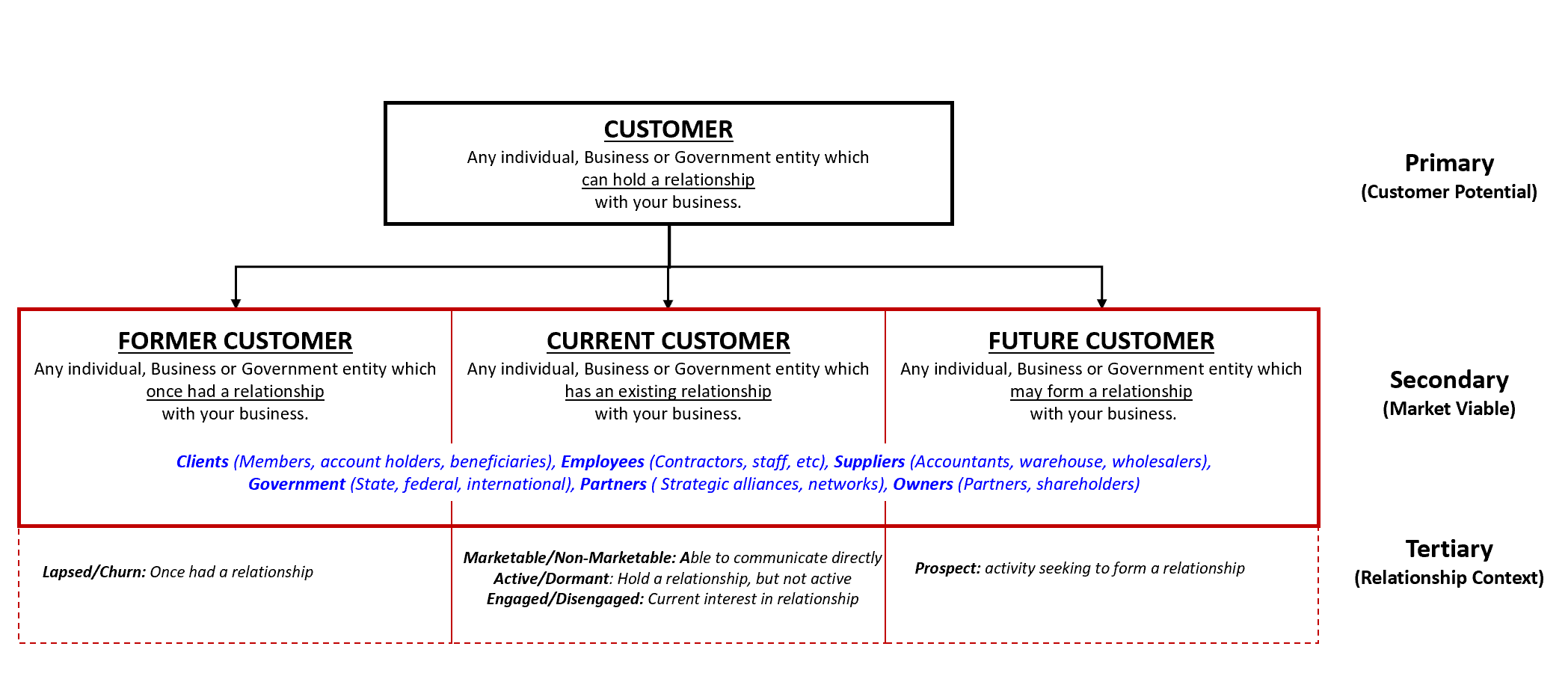Completing our investigation of Discovering Customer, we have reviewed the changing dynamics of the customer relationship in “(Part 1): Who is the customer”, defining a new paradigm of considering who your customers are. (Part 2): Universal Customer Definition we presented a new relationship hierarchy that considers dimensions of time and relationship context. We will road test this theory to see if it works for your organisation in this final piece.
Revisiting our definition structure, Customer Crunch defines customer holistically as ‘Any Individual, Business, or Government entity which can hold a relationship with your business.’

To test this matrix, let’s see if our Customer theory stacks up with some extreme considerations.
Are Employees Customers?
Based on our definition, an employee of a business is a client. They have an interactive ‘live’ relationship, they trade their own time, effort and expertise for a wage and professional experience. They have expectations on working conditions, from variety and certainty to culture and leadership. If their needs are not met, they will look for an alternative ‘relationship’ and take active steps to find a new job.
Your business’s product and/or service did not meet their expectations, so they ‘Lapsed’. They may express their experience publicly on social media forums, supporting or subverting your efforts to attract more of these types of customers.
Are suppliers’ customers?
A supplier also has an interactive ‘live’ relationship. The dynamic here is that you are both customers of each other. They may supply raw material or wholesale goods; your business moves these products to the market at an acceptable price and pace.
The relationship could be based on trust, via representation or expertise to on-sell the product, or an outright financial transaction. If your business garners a poor brand in the market, the supplier may not want this relationship to continue. If your business is unable to move the product, the supplier may direct their product to your competitor.
Is the government a Customer?
The government has a relationship with your business. It can protect your business from foreign interests, anti-competitive behaviour, or corporate theft, to name a few. It sets out legal policies, procedures, governance and protection. In return, you pay corporate taxes, adhere to fair employee working standards and trade within commercial guidelines. A strong relationship with the government can open the doors to financial grants, government contracts, or representation.
Are these not all relationships that you should nurture?
Are they not all a customer to your business, just holding a unique relationship?
The Customer Crunch Definitional Matrix considers that everyone who interacts with your business is a customer. When a company endeavours to conduct a customer transformation program, all these factors of changing needs, relationship status, context, and others, including relationship depth and value, should be considered.
How you treat them depends on what type of customer they are and how long they remain so. Not appreciating, monitoring, and actively influencing these relationships can be the detriment to building an enduring business.
